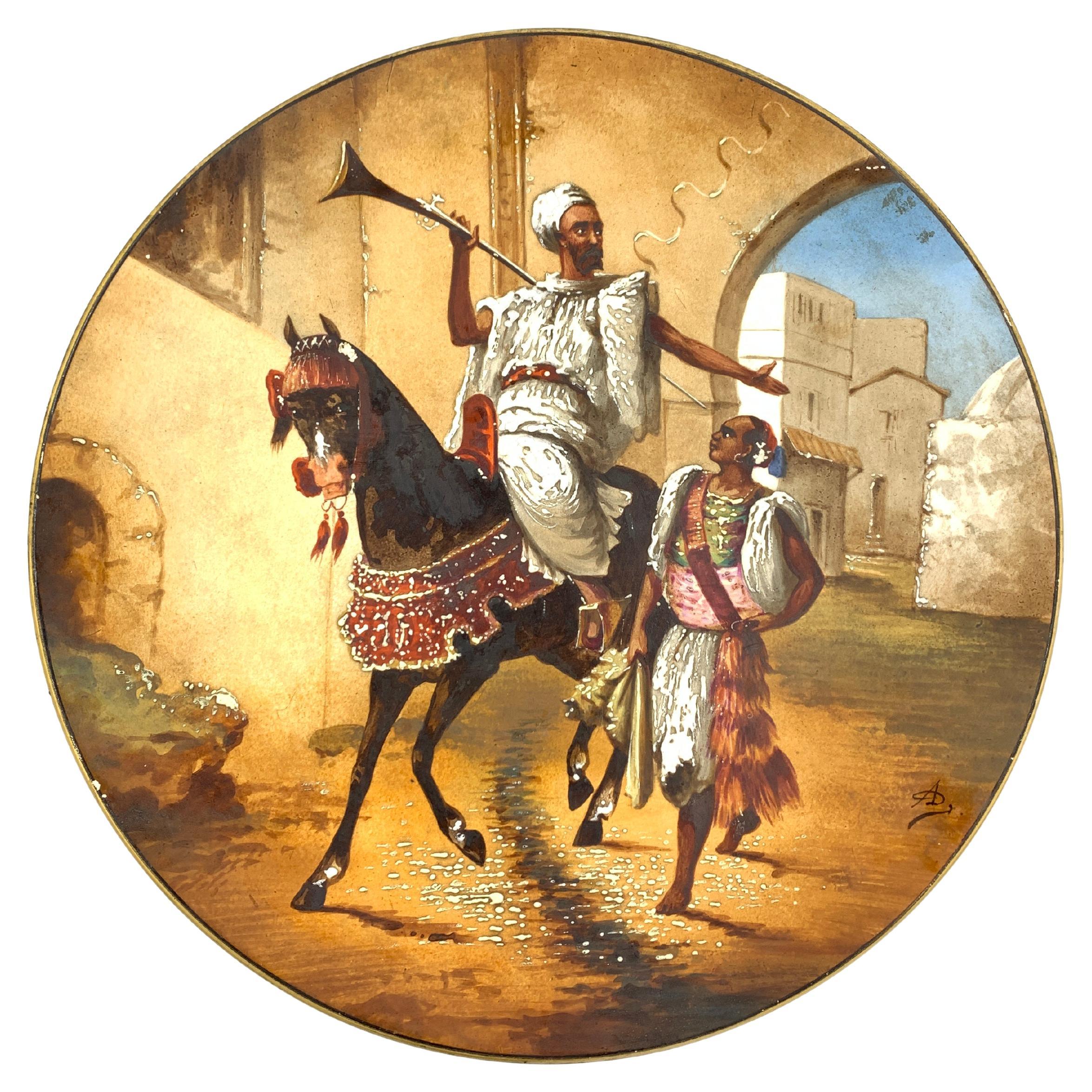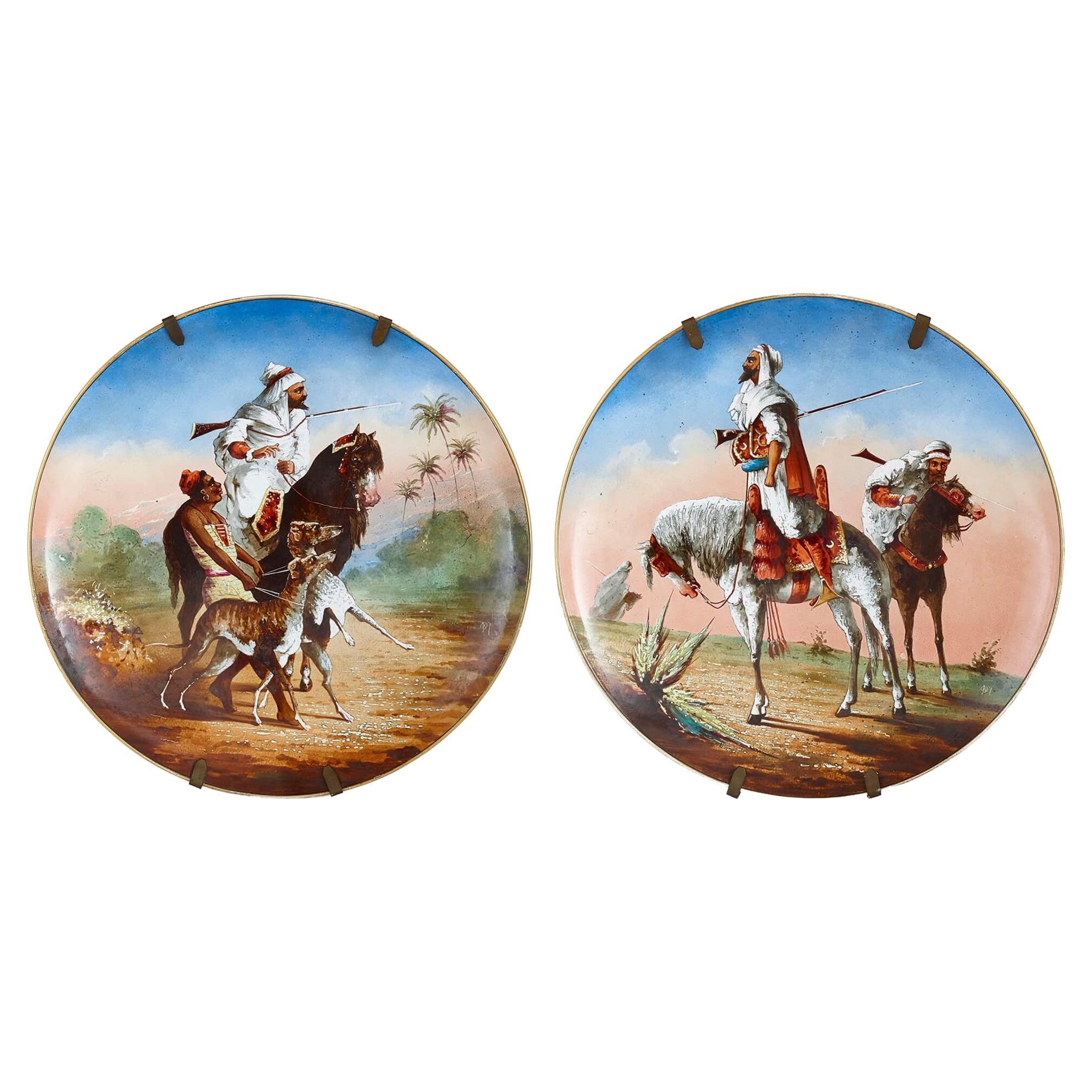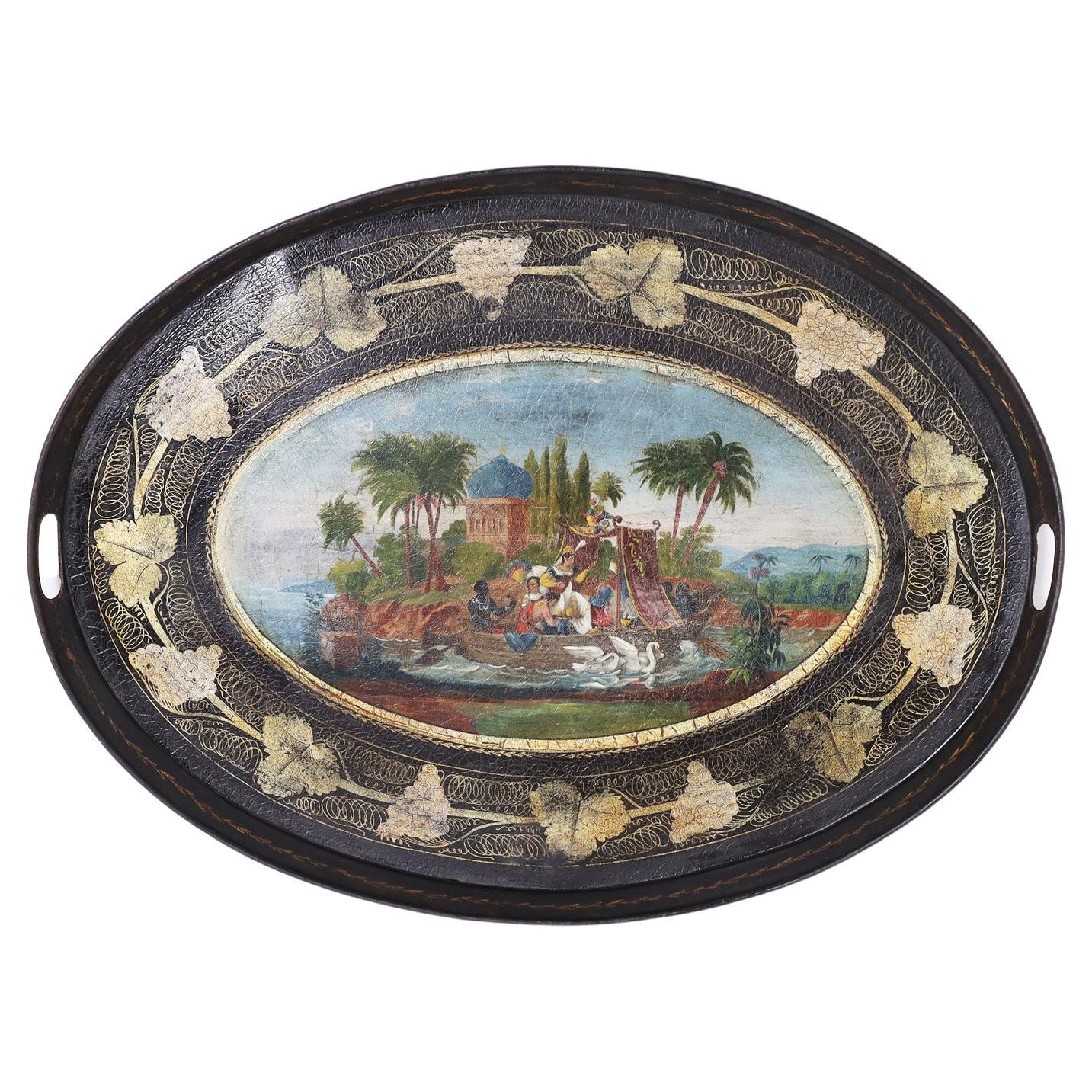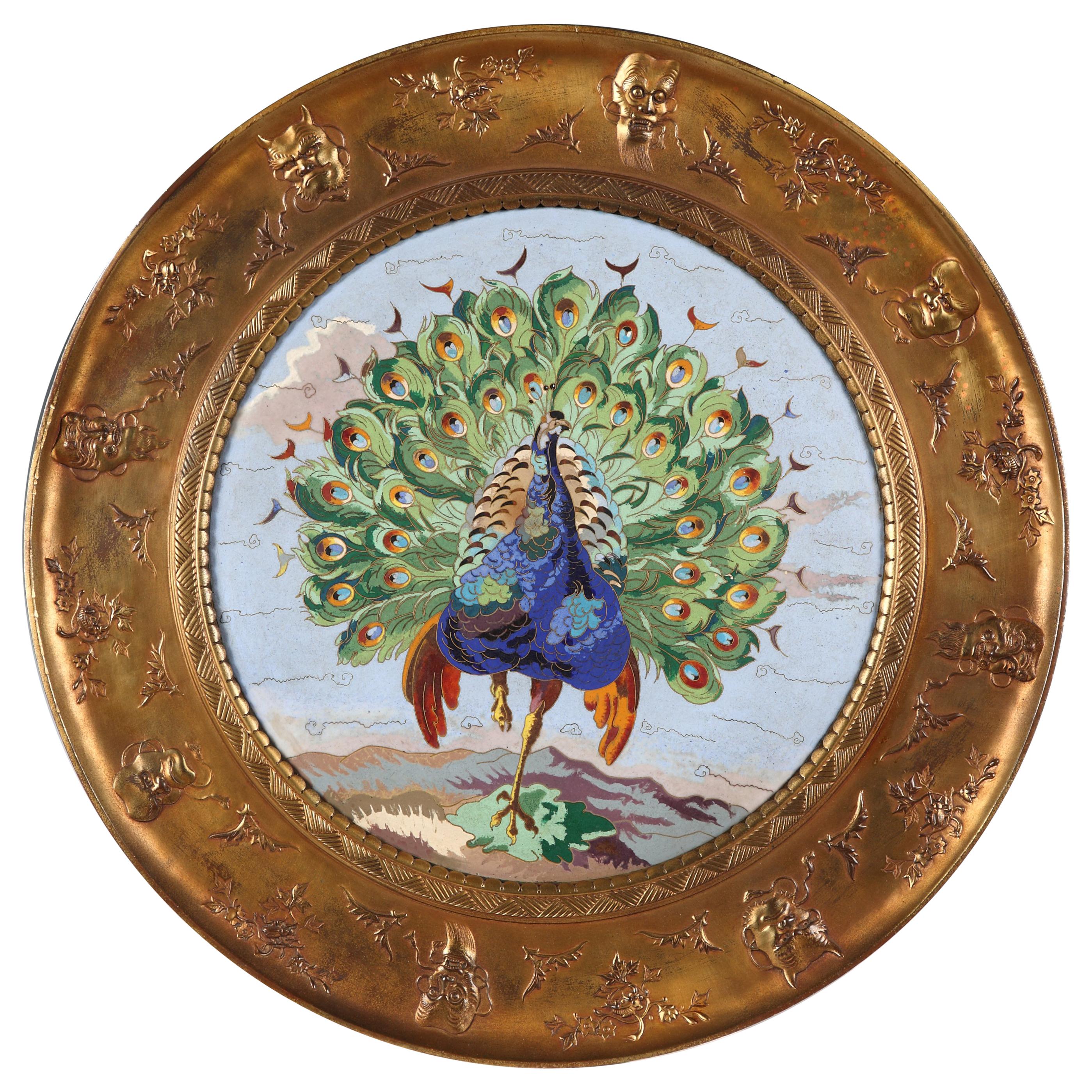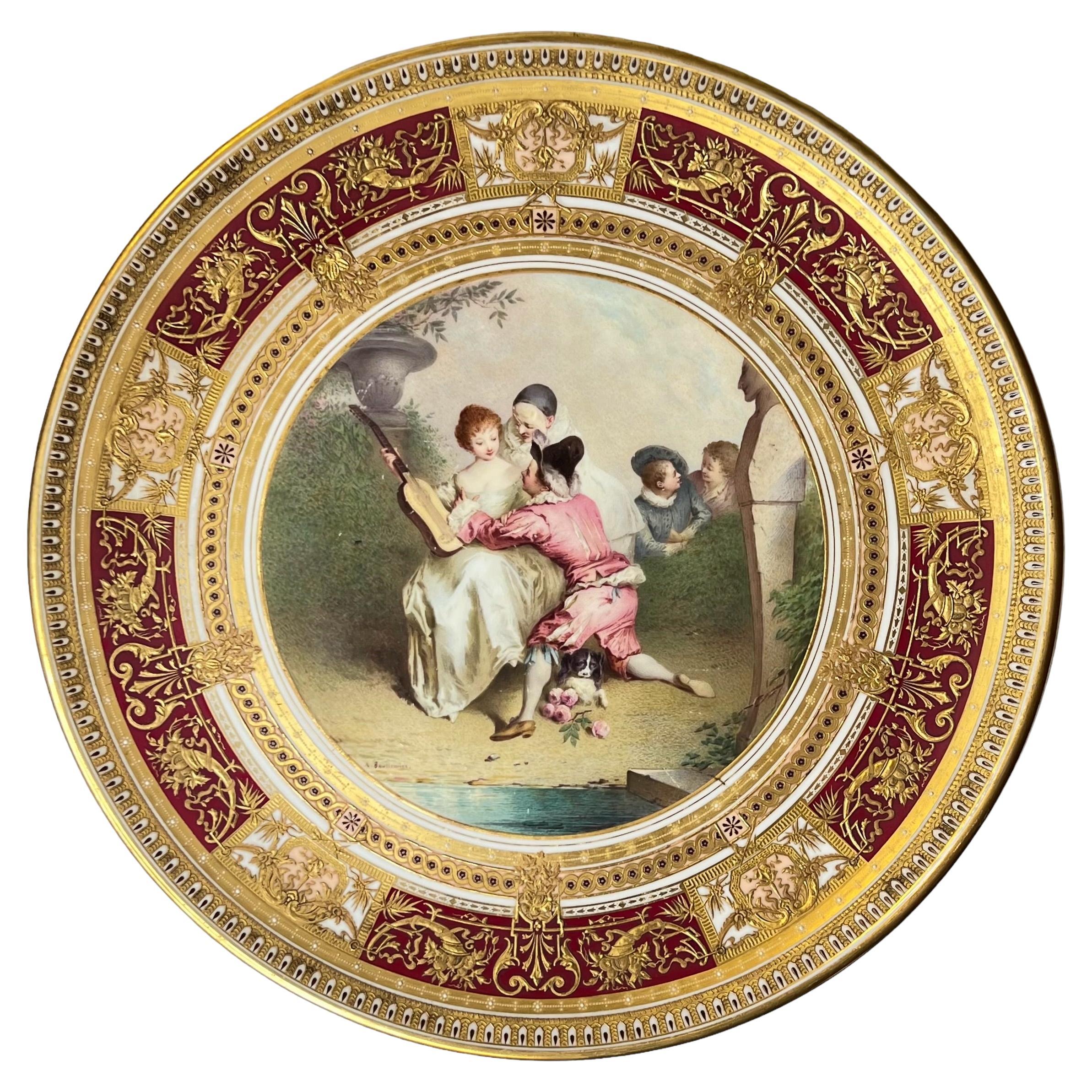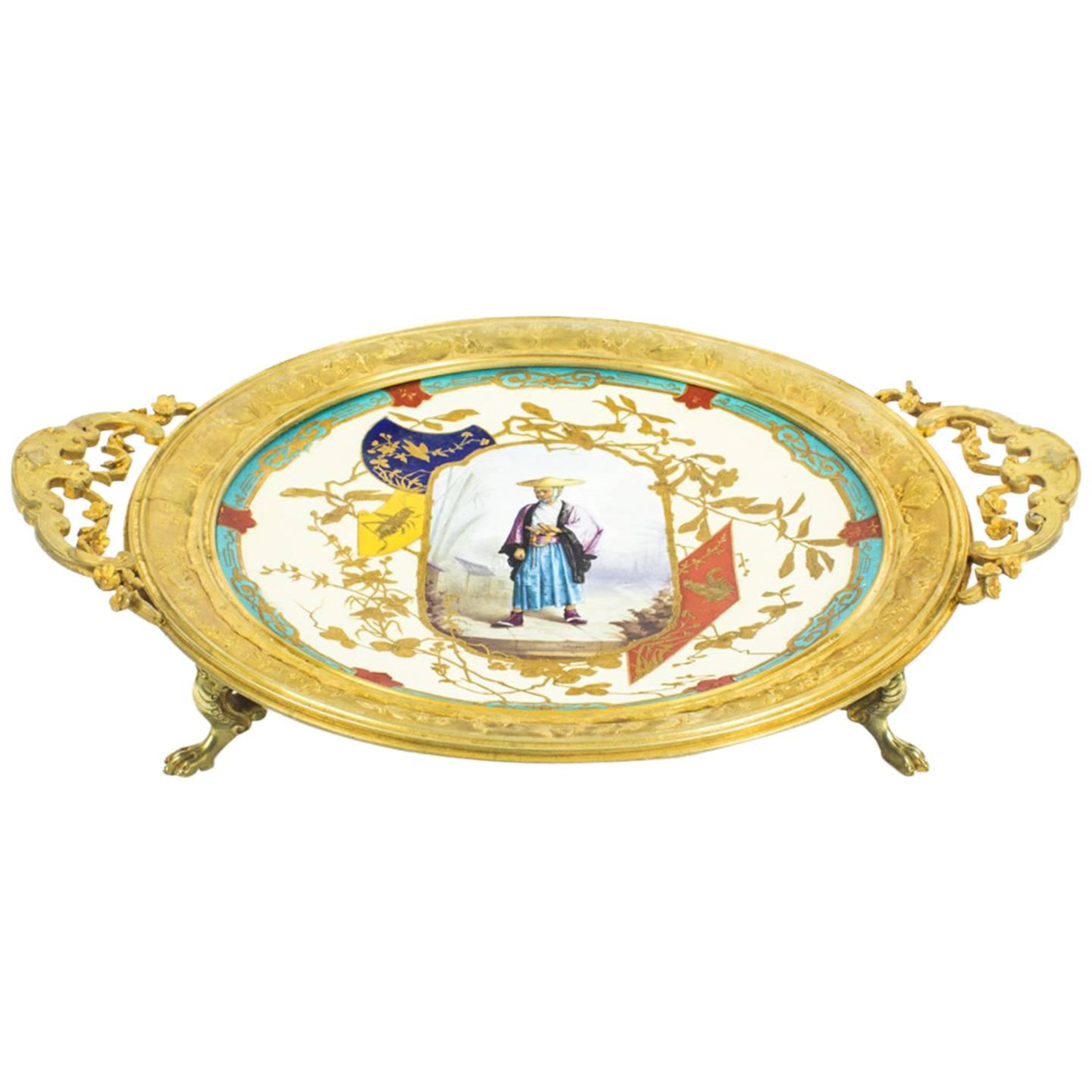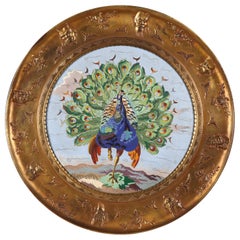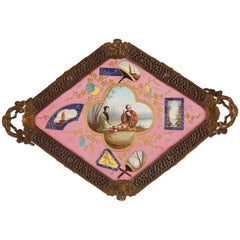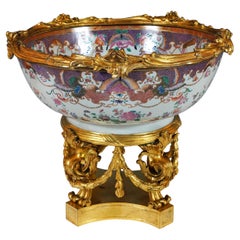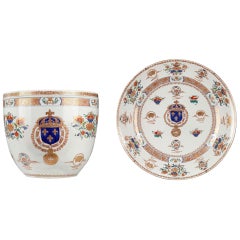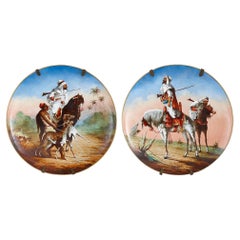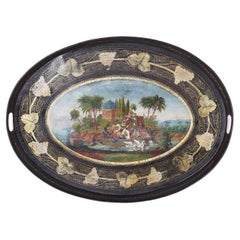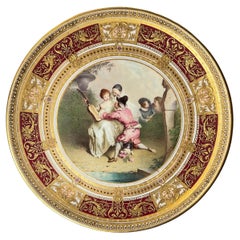Items Similar to Fine Orientalist Dish by Lebeuf, Milliet & Cie, France, Circa 1845
Want more images or videos?
Request additional images or videos from the seller
1 of 5
Fine Orientalist Dish by Lebeuf, Milliet & Cie, France, Circa 1845
$8,062.05
$14,819.9545% Off
£6,033.57
£11,091.1345% Off
€6,800
€12,50045% Off
CA$11,122.30
CA$20,445.4145% Off
A$12,368.46
A$22,736.1445% Off
CHF 6,496.18
CHF 11,941.5145% Off
MX$151,216.83
MX$277,972.1245% Off
NOK 80,948.67
NOK 148,802.6945% Off
SEK 76,312.73
SEK 140,280.7545% Off
DKK 51,764.98
DKK 95,156.2145% Off
About the Item
Signed by Cojoie AD, the decor-painter
and on the reverse, LM et Cie, the making mark of the manufacture
A circular hand painted pottery charger, decorated with an orientalist scene depicting an Arab ridder and his servant getting out of a town. The piece is outlined with a black and Fine gold banded rim.
In order to compete with the English production, the Creil (Oise) and Montereau (Seine-et-Marne) manufactures began producing “English style” white paste earthenware as soon as the 18th century. At Montereau, English potters refugees in France shared their skills with Louis Leboeuf (1792-1854). Under the second empire, technical innovations, added to the enthusiasm of the middle classes in the decorative arts, provided a production of fine standard, more accomplished and more diverse. The white clay was then relayed by the opaque porcelain, then whiter, harder and tougher. With the merger of manufactures of Montereau and Creil in 1840, Lebeuf went into partnership with Milliet (marks “Lebeuf Milliet and Co.” from 1840 to 1874, followed by “Lebeuf and Co.” from 1875-1876). Both partners were constantly seeking to discover new and various techniques and patterns of decoration. This golden age lasted until the early 20th century as the economic crisis appeared. A restructuring process was started and Montereau was preferred to Creil. The takeover by the Choisy manufacture in 1920 continued the mass production until 1955, when Montereau definitely closed down its workshops.
- Creator:Lebeuf Milliet & Cie Creil Montereau (Manufacturer)
- Dimensions:Height: 1.78 in (4.5 cm)Diameter: 19.89 in (50.5 cm)
- Materials and Techniques:
- Place of Origin:
- Period:
- Date of Manufacture:circa 1845
- Condition:
- Seller Location:PARIS, FR
- Reference Number:Seller: 1075/11stDibs: LU3860313526532
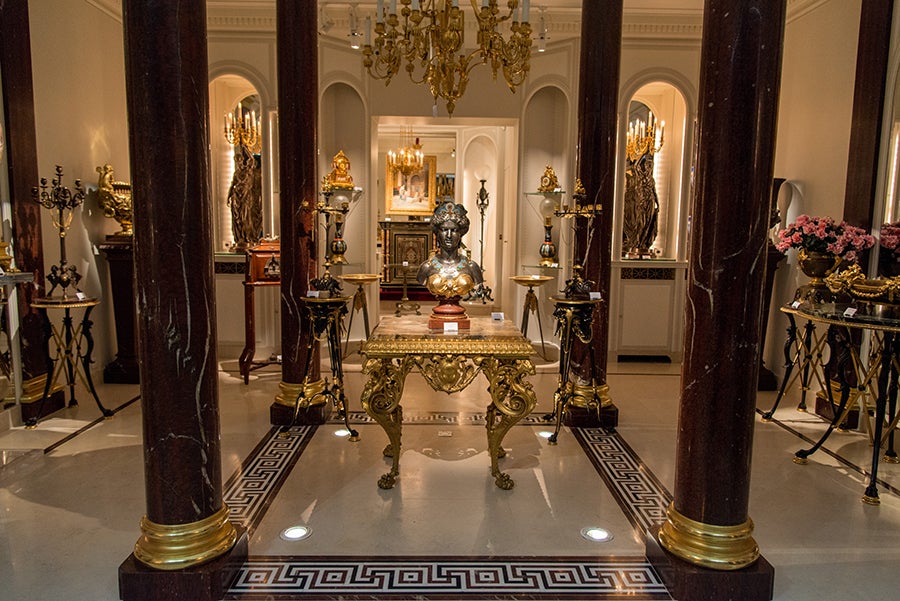
About the Seller
4.9
Vetted Professional Seller
Every seller passes strict standards for authenticity and reliability
Established in 1997
1stDibs seller since 2018
87 sales on 1stDibs
Typical response time: <1 hour
Associations
International Confederation of Art and Antique Dealers' Associations
- ShippingRetrieving quote...Shipping from: PARIS, France
- Return Policy
Authenticity Guarantee
In the unlikely event there’s an issue with an item’s authenticity, contact us within 1 year for a full refund. DetailsMoney-Back Guarantee
If your item is not as described, is damaged in transit, or does not arrive, contact us within 7 days for a full refund. Details24-Hour Cancellation
You have a 24-hour grace period in which to reconsider your purchase, with no questions asked.Vetted Professional Sellers
Our world-class sellers must adhere to strict standards for service and quality, maintaining the integrity of our listings.Price-Match Guarantee
If you find that a seller listed the same item for a lower price elsewhere, we’ll match it.Trusted Global Delivery
Our best-in-class carrier network provides specialized shipping options worldwide, including custom delivery.More From This Seller
View AllAesthetic Movement Enameled Plate Attributed to Elkington and A. Willms, c. 1875
By W. Albert Willms, Elkington & Co.
Located in PARIS, FR
Important tray made in gilded bronze and “cloisonné” enamel attributed to Elkington and Willms. Ornamented with a centering polychrome enameled peacock plaque, made of very high standard quality, mounted on a gilt-bronze dish, decorated in relief with Japanese Nô theater masks.
The great Birmingham firm of Elkingtons, was largely the creation of George Richards Elkington (1800-1865), who worked from 1824 in Birmingham as a manufacturer of silver-mounted scent bottles. By 1829 the business had expanded sufficiently for a branch to have been established in London. In the late 1830s the Elkingtons began making experiments to apply the principles of electro-metallurgy to gilding and plating with silver and in 1840 the patent was at last taken out. Elkingtons owed their rise to a position amongst the most important silversmiths of the country to their exploitation of this new process and the two of the most famous designers then employed, both of them French, Albert Wilms (1827-1899) and Morel-Ladeuil (1820-1888), who helped to make Elkingtons’ reputation with their elaborate exhibition pieces.
Albert Willms was apprenticed as modeler and engraver to Klagman, Dieterle and Constant in Paris before working for Morel & Co. in London in 1848. On his return to Paris he was employed by the great Parisian silversmiths including Christofle and Froment-Meurice, for whom he designed pieces to be presented at the 1855 Universal Exhibition in Paris. It was during this period that he joined the firm of Elkington in London as head decorator. Elkington was soon to become one of the first to produce refined pieces in “champlevé” enamel in the Chinese and Japanese styles, which were presented with great success at the London Universal Exhibition in 1862 (see Masterpieces of Industrial Art & Sculpture at the International Exhibition 1862, J.B. Waring, London, 1863, III, pl. 211). Willms’ “champlevé” enamels could not be compared, however, with the delicate “cloisonné” enamels exhibited by Japan at the Universal Exhibition in Paris in 1867. This explains why Elkington adapted the ancient Japanese technique to produce pieces according to European taste and custom. Followings the 1867 Exhibition all the major European artists rivaled in ingenuity for the 1873 Universal Exhibition in Vienna. In London Albert Willms presented his luxurious vases and cups in “cloisonné” enamel for Elkington (see Illustrations of Art Manufacturers in the Precious Metals exhibited by Elkington & Co., Inventors, Patentees and Manufactures of electroplate, 1873), whilst in Paris, Ferdinand Thesmar (1843-1912) produced in the workshops of Ferdinand Barbedienne (1810-1892) a tray decorated with a golden pheasant in “cloisonné” enamel on copper...
Category
Antique 1870s English Aesthetic Movement Decorative Dishes and Vide-Poche
Materials
Enamel, Bronze
$16,005
Free Shipping
Charming Japanese Style Tray Attributed to l'Escalier de Cristal, France, c.1880
By L'Escalier de Cristal
Located in PARIS, FR
Rare Japanese style diamond-shaped tray attributed to l'Escalier de Cristal, representing lake landscapes in cartouches, and adorned in its center with a lunch scene with a Japanese couple in traditional dress, all highlighted by a gilded decor of flowering branches on a pink porcelain background.
The whole is framed by a gilded openwork bronze mount ending on the sides by two handles.
“L’Escalier de Cristal”, an old and famous Parisian firm, specialized in glass products and ceramics but also suggested furniture and bronze sculptures. It was led from 1885 to 1923 by Emile Pannier’s sons, who gave the name of Pannier Frères to the society, located at the corner of Scribe street and Auber street, next to the new built Paris Opera house. Their Japanese style creations were among many others much appreciated by the critics and the public. They were awarded many medals at various exhibitions, such as the Gold medal at the 1900 Paris Universal Exhibition.
Lots of artists participated in that world success, such as Emile Gallé, who gave to Pannier Frères the exclusive rights of some of his models, or François-Eugène Rousseau, who designed many vases and gave the model of his successful Japanese style dining-set as well. This set was made by the Creil et Montereau Manufacture. In the Japanese style furniture...
Category
Antique 1880s French Japonisme Decorative Dishes and Vide-Poche
Materials
Bronze
Porcelain Bowl, Compagnie des Indes, France (mount) - China, 18th/19th Century
Located in PARIS, FR
China 18th Century (bowl) – France 19th Century (mount)
Beautiful enameled porcelain bowl in the pink-purple tones characteristic of the “Famille Rose” with polychrome decoration o...
Category
Antique 19th Century French Chinese Export Decorative Bowls
Materials
Bronze
Planter and Decorative Dish Attributed to Samson & Cie, France, Circa 1880
By Samson & Cie
Located in PARIS, FR
Important porcelain planter and decorative dish attributed to Samson & Cie.
They are decorated with golden and red friezes of intertwined lotus, fruits and flower cups, fans and two...
Category
Antique 1880s French Planters, Cachepots and Jardinières
Materials
Porcelain
"The Donkey Race" Limoges Porcelain Dish, Signed F. Mérigot, France, Circa 1890
Located in PARIS, FR
Charming Limoges porcelain dish with scalloped edges representing a popular festival, a donkey race in a village in Bretagne, attended by families in traditional outfits.
Maximil...
Category
Antique 1890s French Decorative Art
Materials
Porcelain
Elegant Pair of Japanese Style Dishes, France, Circa 1875
Located in PARIS, FR
Pair of 18th century soft-paste porcelain dishes finely decorated in the 19th century with medallions representing Japanese theatre characters dressed in traditional costumes, beautiful gold-embossed ornament on a polychrome background.
These dishes are to be linked with the production of the Sèvres Manufacture.
The Manufacture de Sèvres, factory of soft-paste porcelain, was founded in 1738 at Vincennes by bankers and financiers hoping to discover the secret of making hard-paste porcelain, used in Meissen at the time. In 1753, King of France Louis XV became the main shareholder of the factory, transferring it to Sèvres, closer to Versailles and the castle of Bellevue, owned by la Marquise de Pompadour, very interested by Sèvres’ research and supportive of the works. In 1759, the King became the sole shareholder of the Manufacture, making it the property of the French Crown. From this day on, the Sèvres artworks were marked with the royal seal, two intertwined “L’s”, as well as a letter indicating the year of creation. The period between 1756 and 1779 represents the most prosperous years for the factory. To support Sèvres, Louis XV made sumptuous orders offered as diplomatic presents. The main artists at the time, such as painters Boucher and Bachelier or sculptors Falconet and Boizot, worked for the factory. Research on the making of hard-paste porcelain kept going and succeeded after 1769. From this year, Sèvres successfully produced both soft-paste and hard-paste porcelain. It is also during this period that the most beautiful and singular colors were invented: bleu lapis in 1752, bleu celeste in 1753, green in 1756, famous pink in 1757 and royal blue in 1763. The most significant pieces are ornamented with scenes inspired by engravings from famous painters (Boucher) and ornamentalists. They are also decorated with garlands, bunches of flowers, trophies, gildings… The fine quality of Sèvres’ production covers a large range of statuettes (Falconet’s threatening Love), full services (Rambouillet’s service is presented to Marie-Antoinette in 1788), as well as utilitarian or ornamental items. The role played by haberdashers in the production’s development is essential. They originated trends around Sèvres-designed products, such as Daguerre who decorated his most precious furniture with porcelain...
Category
Antique 1870s French Porcelain
Materials
Porcelain
$5,216 Sale Price / set
63% Off
Free Shipping
You May Also Like
Porcelain Plate Depicts Arab Horseman, France, 19th Century
Located in London, GB
A fine orientals porcelain plate depicts Arab horseman holding his rifle while riding his horse and chatting to a women walking next to him.
Category
Antique Late 19th Century French Porcelain
Materials
Porcelain
Antique pair of Orientalist painted porcelain plates
By Montereau Pottery
Located in London, GB
Antique pair of Orientalist painted porcelain plates
French, 19th Century
Height 5cm, diameter 35.5cm
The pair of plates are finely painted, one dep...
Category
Antique 19th Century French Porcelain
Materials
Porcelain
Antique English Tole Tray with Orientalist Painting
Located in Palm Beach, FL
Lofty 19th century English oval tole tray with two cut out handles featuring a colorful orientalist oil painting complete with figures in a boat architecture and tropical setting ins...
Category
Antique Mid-19th Century English Victorian Serving Pieces
Materials
Metal
Viennese Porcelain Charger by Antonin Boullemier (1840-1900)
By Royal Vienna Porcelain
Located in New York, NY
Antique Royal Vienna porcelain plate painted by Antonin Boullemier (1840-1900), depicting courting lovers and with extensive neoclassical mofits and gilt decorations. Excellent cond...
Category
Antique Late 19th Century Austrian Porcelain
Materials
Porcelain
Antique French "Japonesque" Porcelain dish by Louis Pierre Malpass 19th C
Located in London, GB
This is an absolutely fabulous antique French "Japonesque" ormolu mounted porcelain tripod dish, late 19th century in date.
It bears the signature of Louis-Pierre Malpass, one of th...
Category
Antique 1890s French Porcelain
Materials
Ormolu
Italian Paris Porcelain Painted Plate, Naples Circa 1825
Located in CH
Italian Paris Porcelain Painted Plate, Naples Circa 1825
During the late 1700s in Naples, King Ferdinand IV hired 2 well-known painters Alessandro D'Anna and Saverio della Gatta to ...
Category
Antique Early 19th Century Italian Restauration Porcelain
Materials
Porcelain
More Ways To Browse
Pottery Charger
Antique Black Dishes
French Creil
Antique Pottery Charger
French Charger
Creil And Montereau
18th Century French Pottery
Antique Gold Chargers
Antique French Porcelain Dishes
Large Decorative Plate
Mid Century Modern Decorative Plates
Decorative Blue Plate
Antique Porcelain Pottery
Antique Porcelain Basket
Antique Vide-Poche
Hall Antique Dishes
Antique Plates And Bowls
Decorative Plate China
